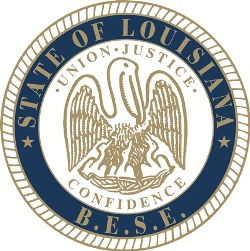On August 23rd, the Academic Goals and Instructional Improvement Committee of Louisiana’s Board of Elementary and Secondary Education (BESE) will consider recommended changes to the state’s accountability formula.
These recommendations are the result of a year-long analysis of accountability by a working group of BESE members initially tasked with exploring how the state measures, values, and rewards growth in the accountability formula. The group eventually studied the entirety of Louisiana’s K-12 accountability system, including the formula for calculating school performance scores (SPS).
The BESE working group has proposed four categories of changes to the state accountability formula: “improving clarity and coherence, modernizing high schools, recognizing true growth, and ensuring a strong literacy foundation.”

Improve Clarity and Coherence
This set of proposed changes aims to ensure that scores are easier to understand and more representative of schools’ academic performance. For instance, the current SPS is scored on a scale of 0-150. The working group is suggesting changing it to a simpler 0-100 scale, with up to 25 bonus points for advanced performance. The working group recommends gradually moving toward a scale in which an A= 100 points or above, B=85 points, and C=70 points.
The proposed changes also aim to better align SPS with students’ performance, so that the number of As and Bs better reflect the number of schools where students are performing on grade-level or are on track for college readiness.

Modernize High Schools
BESE aims to ensure each student persists through graduation and has a clear path for their future, including career readiness and a “feasible path to post-secondary education.”

Over 80% of high school students in Louisiana are on the university-preparation pathway, but just 37% are reaching the college-ready standard on the LEAP, and fewer than half of graduates either don’t begin college or exit within a year.
In particular, BESE’s working group hopes to align what an “A” or “B” looks like in high school, compared to what it looks like in elementary schools. Currently, while 70% of high schools earn an A or a B, just 41% of elementary schools do, even though they have roughly the same percentage of students earning “mastery” on state tests (around 35%). Because high school SPS includes more factors than grades 3-8, including ones related to graduation, those factors tend to result in higher SPS scores. BESE’s proposed shifts result in similar high school and elementary school performance, generating similar SPS and letter grades.
SPS components related to college and career readiness would also become more rigorous.

Recognize True Growth
Importantly, SPS reflects not just whether students meet the state’s academic standards, but also how far they’ve moved toward that standard compared to their peers. The goal of this “growth metric” is to reflect how much a school helps a student learn, regardless of the student’s performance upon arriving.
BESE’s working group proposes keeping a growth metric, but adjusting it slightly to try and better reflect “true growth,” or significant improvement in the number of students performing better than their peers from one year to the next. They would no longer give points to a school, for instance, for students who grew somewhat, but performed below-average in relation to their peers.

Ensure a Strong Literacy Foundation
Literacy is key to a child’s academic success, and the state is seeking ways to measure our youngest students’ progress in learning to read. They are recommending a standardized “literacy screener” for students in grades K-2 that would measure how well students are gaining the fundamentals of reading; it would be included in schools’ assessment and growth indexes. BESE also recommends that non-test-based reviews, such as observation rubrics, be used as part of the evaluation process for elementary schools.
***
As the working group considered these changes, the Department of Education engaged with members of the education community, including superintendents, charter management organizations, single-site leaders, and advocacy groups. The Department provided data and simulations to help stakeholders see how the changes would impact schools and systems throughout the state.The working group proposes putting changes into place at the start of the 2025 school year. If they are adopted, they would affect scores beginning in 2026. We still do not know which, if any, of these changes will be put in place. We recognize that if they do, schools in New Orleans and across Louisiana may see shifts in their letter grades as they adjust to the new metrics. We hope that schools will continue to use SPS as a tool for understanding their performance and how it compares to other schools statewide. We also know that letter grades will always be just one measure of a school’s success and its impact on children. As BESE debates these changes next week, we will make sure to update our community around what accountability will look like in our state going forward.
